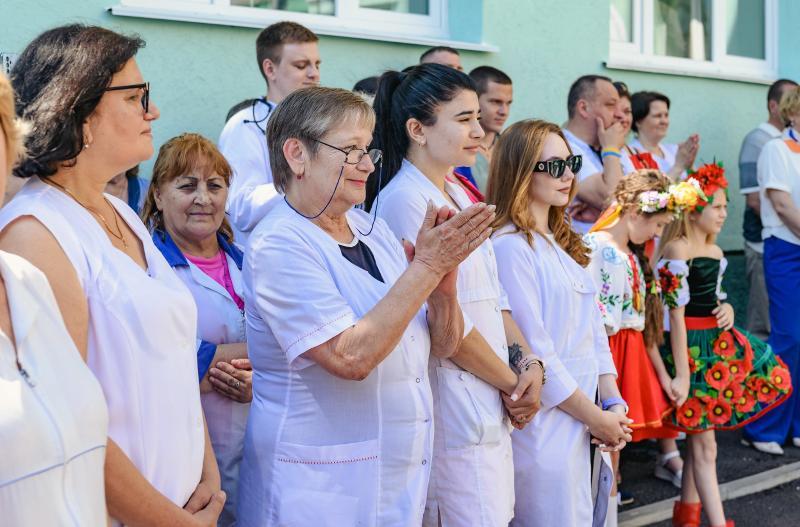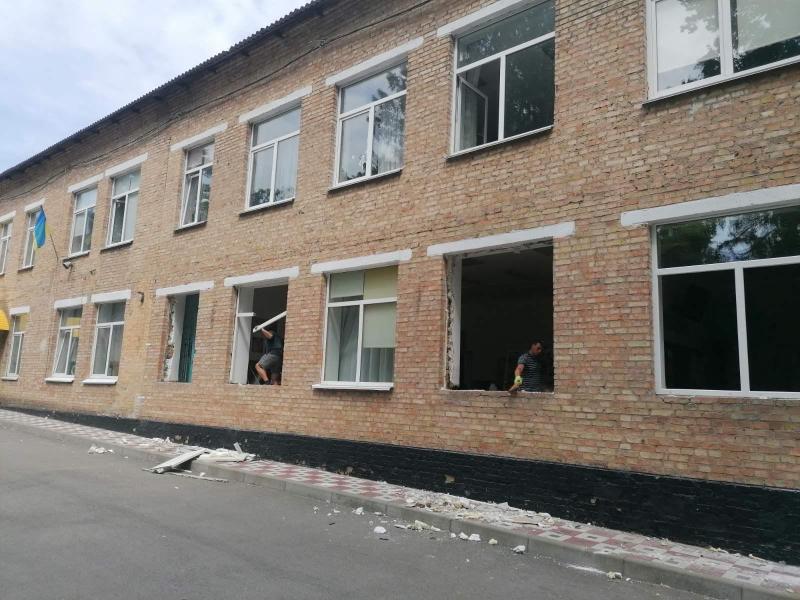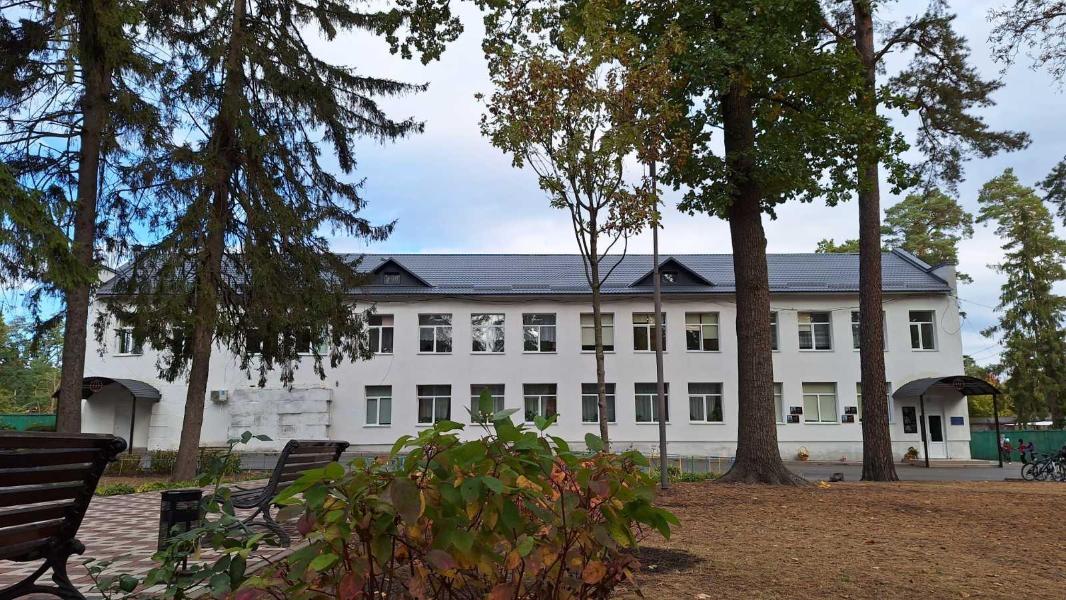From hospitals to transport, EU bank support helps Ukrainian cities in the struggle to maintain access to water, electricity, heating and healthcare
When asked to list the hardships of working in a Ukrainian hospital during the war, Maria Bobkova didn’t know where to start.
“We have had problems everywhere, from the entrance of the hospital on the ground floor and all the way to the roof,” says Bobkova, 71, who is head doctor in Hospital No. 8 in Odesa. “We are a large hospital with many buildings, and all of them needed repairs.”
On Ukraine’s southern coast, Odesa was one of the first areas bombed when Russia invaded in February 2022. Hospitals in Odesa have had a hard time keeping electricity running and maintaining supplies and medical staff. Even before the war, hospitals such as No. 8, which was built in 1964 and never overhauled, needed a lot of repairs.
To help Bobkova and her staff plug the gaps, EIB Global, the European Investment Bank’s development arm, disbursed a €600,000 loan to renovate the polyclinic part of Hospital No. 8, which is well known for its highly qualified specialists. As a result, the hospital finished its main repairs in July 2023, buying new furniture, repairing foundations, adding specialised rooms, new power supplies, insulation in the walls and a new roof to end the leaks. Powerful generators were installed to provide electricity during blackouts caused by the war.
“We have a completely different hospital now,” Bobkova says. “Many people did not believe that such changes were possible during the war.”

Maria Bobkova, centre, celebrating in July 2023 the renovation of her hospital’s polyclinic in Odesa, Ukraine. (UNDP)
Supplies are precarious in many cities
The European Investment Bank has been approving emergency financing every month across Ukraine since the start of the war, with a focus on infrastructure such as power lines, heating systems, water supplies, hospitals, schools, roads, railways, trams, bridges and community centres. The war has seriously hurt residents’ access to water, electricity, heating, health care, education and social services. In many cities in the east, where fighting is intense, water, heating and power supplies are precarious.
“It is always hard to talk with mayors, because I am never sure how bad the situation is,” says Violaine Silvestro von Kameke, a senior European Investment Bank loan officer working on Ukrainian projects, who is in touch regularly with many mayors. “When mayors talk with me, they are often in a shelter or watching to make sure they are not near window. Sometimes they are checking to make sure their families are safe. When we’re talking, sometimes there is an alarm, and they have to rush to move to a shelter. I tell the mayors that I admire their resilience and that we will never abandon them.”
New investment fund for priority sectors
The European Investment Bank’s latest assistance centres on a specialised investment vehicle called the EU for Ukraine Fund. It provides help in all sectors, including venture capital investment for the private sector. EU member states have pledged more than €400 million to this EIB Global fund for sectors such as health, transport, education, cybersecurity, critical social infrastructure and the private sector. Other European Investment Bank assistance to Ukraine includes:
- A loan-guarantee package in 2023 allowing the European Investment Bank to make €100 million in new financing
- €100 million in technical assistance to help Ukraine prepare recovery projects
- A first recovery package at the start of 2022 worth nearly €700 million for immediate assistance to Ukraine, backed by a European Union guarantee
- €1.6 billion in late 2022, with support from the European Commission, for emergency repairs to train lines, roads, bridges and a wide range of city buildings and housing
- €4 billion to help more than six million Ukrainians forced to live in other European countries during the war


Secondary School No. 1 in Bucha, Ukraine, before and after it was renovated
An assessment by Ukraine, the European Commission and the World Bank in the middle of 2023 estimated the cost of reconstruction in the country at nearly €400 billion. The job of rebuilding is expected to stretch over 10 years after the war.
“We are constantly receiving requests from cities about what needs to be purchased and trying to figure how the projects can be started and what is the most important,” says István Heinczinger, a senior transport specialist at the European Investment Bank who’s helping Ukrainian cities modernise their fleets of trams, metros, trolleybuses and buses.
Since 2007, the Bank has invested more than €2.7 billion in transport projects in Ukraine, and this amount is increasing during the war.
“Everything we do is harder right now,” Heinczinger adds. “From contacting city officials, deciding what projects are the top priority of the cities, finding companies to participate in the bidding processes, to locating the supplies and equipment.”
Daily contact with United Nations experts
To accomplish this work, the European Investment Bank is in close contact with United Nations Development Programme project managers working across Ukraine, such as Igor Kistenyov-Kavkazkii. EIB loan officers or engineers are in weekly or sometimes daily contact with experts such as Kistenyov-Kavkazkii.
“There is no doubt that carrying out construction and reconstruction work in Ukraine under conditions of war is a complex task,” says Kistenyov-Kavkazkii, whose UN technical coordination team is partly based in Kramatorsk in the Donbas region of eastern Ukraine, one of the main areas where the Russian invasion began. “This recovery work we’re doing is crucial for the stability of the state and the support of the population in such a difficult time. There is an urgent need to rebuild. Children need to be able to go to school and receive an education, and people need to be able to access health services.”
‘We have to be patient’
Schools and children are two of the priorities for the reconstruction and recovery. In one example of continuous support, a €1 million loan from the European Investment Bank helped repair the V.I. Vernadskyi grade school in Shyshaky Village in Poltava Oblast in eastern central Ukraine, adding new bathrooms, windows and doors, water lines and heating. The school reopened its doors in September 2023 to 466 students, including children from families that had to move away from fighting near the eastern border.

Children celebrating the opening of the V.I. Vernadskyi grade school in eastern central Ukraine in September 2023. (UNDP)
Inna Hamchuk, a history teacher at another school that was repaired, Secondary School No. 1 in Bucha, says this work on education buildings is the difference between children advancing in their young lives or just staying in shelters and falling far behind in studies. Bucha suffered immensely during the invasion because it was one of the first outlying areas of Kyiv taken before Russian forces retreated and gave up on the idea of occupying the country’s capital.
Hamchuck’s school, already in disrepair before the war, was damaged more in 2022 and 2023. Today, with the help of European Investment Bank funding and United Nations technical assistance, the school is being repaired, some of the classrooms are reopening, and rain no longer pours in through leaks.
But a lot of work remains to be done at this school and others in Bucha. Many school buildings are still closed because of damage, and shelters at the remaining schools are often too small to protect all the children.
Since many educational buildings in Bucha can’t reopen, Hamchuck’s school teaches students in two shifts from 8 a.m. to 8 p.m. When the power goes out or it’s too dangerous to teach, the school reaches out to kids online, if their homes have Internet connections.
“We have to be patient,” Hamchuck says. “All children in Ukraine have the right to a high-quality education, but it’s hard right now. Given the challenges, we are still committed to improving our school’s facilities and creating a good learning environment.”
